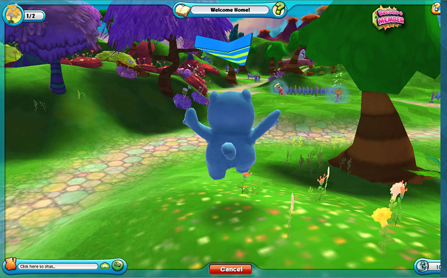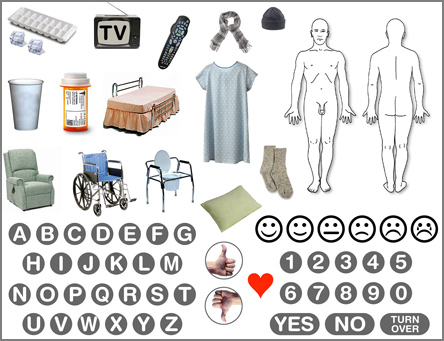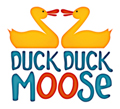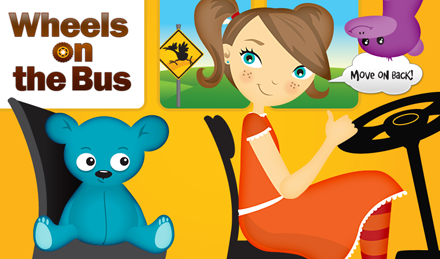Wednesday, December 26th, 2012
[The following is an interview I shared with Children’s Technology Review in their November 2012 issue. I’ve wanted to interview someone close to Webkinz/Ganz for a very long time. The first article I wrote about Webkinz was in August 2009. After years of trying I finally connected with someone within Ganz and the rest is history (HT BL!). I’m very thankful for the opportunity, this is a very rare public look inside Ganz, and hope fans will enjoy the piece.]

Karl Borst is the Creative Director at Ganz for Webkinz; a position that has given him the front row on the turbulent world of children’s virtual worlds. Last week, Karl shared some insights about the past, present and future of Webkinz, including the latest 3D virtual world from Ganz called Amazing Worlds. Here are some selections of our conversation.
Scott Traylor: How long have you been working on Webkinz? Where did the idea come from?
Karl Borst: Development started in late 2003, and I joined on March 1, 2004. The original idea came from Howard Ganz himself. He loved the toys and wanted a new way to market them. Taking inspiration from Cabbage Patch Kids, he wanted to create an experience where the child “discovered†their new pet. Later we expanded this to the idea that your plush “came to life†inside the virtual world. It was very important to us that the player feel the connection between their toy and the pet online. This was where I was able to really expand the original idea. It was critical to me that the pet feel a part of the experience regardless of where you were in the world. Adding the pet’s image to the dock, along with the multiple emotional states and speech balloons may seem very obvious right now, but back in 2004 none of the pet sites had this. This was a big improvement in Webkinz.
ST: How long did it take to get the vision of Webkinz off the ground?
KB: Well it depends on where we finally got “off the ground.†In August of 2004, after a day of play testing with kids, we realized we were going in the wrong direction. Honestly, we threw out a big chunk of work that we’d done up to that date. This was a very difficult decision to make. The toys were paid for, sitting in the warehouse, and plans were well under way to release the toy that October. Going back to the drawing board meant that we’d miss the Holidays. That said, in our hearts we knew that it needed to be done, so we buckled down and got to it. We ended up launching in April 2005, and it was a tough first few months. Retailers didn’t understand the product. They didn’t get how the world and the toy related. We even made a video that explained the product and gave the retailers televisions to show it on. All the while we were adding features and content to the site. The amount of work we did in 2005 is mind blowing. Realize we weren’t even in the top 100, 000 sites at the end of 2005. Yet in 2006 we started to see real momentum. Christmas had given us a lift and then Easter, and the players were coming in at a faster and faster rate. Then in 2007 we exploded, and by the end of that year we were a top 100 site, and the number four Google searched term. If there was anything that I could tell companies that are considering building a virtual world, it would be you need to have patience. None of the virtual worlds have exploded out of the gate – not Webkinz, not Neopets, not Wizard 101, not even Club Penguin. You need to commit to the project and invest in making it better until you’ve got the perfect world for your audience.
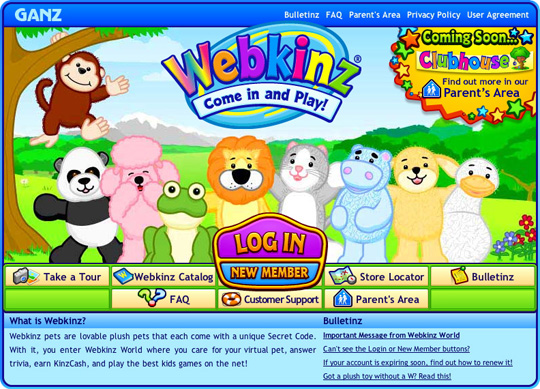
ST: What do you look for when testing with children?
KB: We try to focus on what the child is doing, not what they are saying. You can really learn a lot from the actions a child is taking, or more often not taking. When you ask questions you find that kids have a hard time describing what they did or why they did it, and many times they really want to please you and aren’t as harsh as you really need them to be. When you see them fail at an action, or skip over a feature you thought was key, it speaks volumes.
ST: How did you shape the online experience over time? What guided your thinking?
KB: I’m sure this is where I’m supposed to say that we closely analyzed user trends and data, but to be honest we didn’t. A lot of the time we went with our guts and with what we were hearing from the players. First we knew that we wanted to make the world as interactive as possible. We wanted every object that looked like it was functional to actually be functional. I honestly think this direction has made the Webkinz room engine the best on the market. We also knew we just needed “moreâ€. More games, more items, more stuff to do. Kids love telling you what they want, so you end up with more information that you could ever really use. The real challenge is taking all of that information and finding the gems to follow through with. Then turning those ideas into features that kids actually want to play. We weren’t 100% successful in this, but we had some real hits, like the Employment Office and the Chef Challenge.
ST: How has Webkinz changed over time?
KB: Adding more and more makes things complicated. Webkinz is much, much larger now than when we started. Tons of sections, thousands of items, dozens of games, multi-player areas… When we started it was so simple. Players could jump in and figure it out. Now we need to help players through the initial few plays so that they don’t get overwhelmed by the options. There comes a point where adding new features doesn’t improve your game. Now we’re focusing on refining our features, and using those features to create engaging events on a regular basis.
ST: Do you see differences in how kids from different countries use Webkinz?
KB: Actually, we don’t. I think that we’re tapping into some universal ideas of play and imagination. The core activities for all of our players are play games in the Arcade, do their daily activities and then play with their pets in their virtual rooms. While we’ve added dozens of features since the launch of the game, these core features which we’ve had since day one still resonate the best.
ST: Ganz has a number of virtual worlds now, can you share a little about each?
KB: We have four. First of course is Webkinz, which has been running strong for seven and half years now. Next is Webkinz Jr. It was designed as a truly pre-school virtual world. It’s highly educational, and requires no reading. While it did not see the success that Webkinz did, parents of children who play absolutely love the site. This year we released two more virtual worlds. In Amazing World you play a “Zing, †helping out the characters you meet, shooing away the nasty Nix, and working together to make the world more amazing. Finally, we’re currently in Beta with another new virtual world called Nakamas. This world has been specifically designed for girls ages 5-11 who love making friendship bracelets and hanging with friends.
ST: How long has Amazing World been in development?
KB: While I can’t say exactly how long we’ve been working on it, the development time was similar to Webkinz. Again we went through a number of iterations. Sometimes building a game takes on a life of its own. Many of the features that are now in the game, like the Nix, were added very late in development. And we’re still improving the game. We haven’t been happy about the interiors of the homes for some time now, so we’re working on making them much cooler – really taking them in a new direction.
ST: What did you do differently in building Amazing World from that of Webkinz? Are there any similarities?
KB: From the very start of the development of Amazing World, I wanted to build a virtual world that complimented Webkinz. I wanted players to have a very different experience in AW than in Webkinz. This is why you don’t “take care†of your Zing, and it isn’t a “petâ€. The player should be able to play Webkinz for half an hour, then jump over to Amazing World and never feel that they’re duplicating effort. The other obvious difference was that the game was working with Unity3D to create a world that you can really live in. This meant that we wanted our games and activities to feel part of that world, and not independent sections. The fact that there is no “arcade†was a conscious decision. It also allowed us to do much more with the Zing’s room. Now the home and the yard provide greater freedom of design, without the restriction of a “grid.†This freedom comes at the cost of some more complexity but I think we’ve done a good job of balancing this out.
ST: What are you hoping for with Amazing World?
KB: Naturally we’re hoping that Amazing World captures the imaginations of kids, like Webkinz. While we’ve all seen many toy-connected virtual worlds come and go, Amazing World has the potential to revitalize this space, and most importantly, Ganz is committed to making this world great. Most people don’t remember that when Webkinz was launched that it was quite small, but was teeming with potential. With a dedicated team, we were able to refine, expand and improve the game into what it is today. We have a team that is just as dedicated to Amazing World and I am confident that players who get into Amazing World will stay on board for a very wild and exciting ride.
ST: How challenging is it to manage the needs of a toy product with that of a related virtual world?
KB: Ganz started out as a toy company, so when it comes to creating the products themselves, we’ve got a great system. The challenge comes with creating unique, engaging online play for specific products under a single brand. If you look at any popular toy line, take Polly Pocket as an example, you’ve got small $5 figure packs and large houses for $50 with multiple figures, and special packs with animals, etc. When those are the toys by themselves, the value is right before your eyes and you either like what you’re about to open or not. When you have a connected virtual world, you have to make a decision. What does each item give you? What should a $50 toy get compared to a $5 toy? Despite the fact that the customer can see the value of the $50 toy, there is still an assumption that the online play value will be greater than a $5 toy. Do I think that we nailed it with Webkinz every time? No. We had some real knock out successes with our ancillary products and some real flubs. It was bound to happen as we felt out this uncharted territory. That said, what we did perfectly well was the initial toy purchase itself. The value that we give with a single Webkinz plush toy is exceptional, and has clearly driven our thinking for our new sites.
ST: What do you think of the virtual world space today? How about the toy industry? Any thoughts on where you see either industry going?
KB: Overall I feel that virtual worlds have an inherent challenge to their definition. Virtual Worlds aren’t MMOs in the classic sense, though they have many of the social, multi-player experiences that make MMOs great. They also aren’t game depots, like Miniclip, but are expected to have many, quick-play games to engage players while they work up the virtual currency to expand their homes and dress their avatars. Finally, they aren’t “games†per se. They need to be a sandbox of interactive systems that allow the players to choose the experience that they wish to make, while remaining a cohesive world that isn’t confusing to a new player. It is important to integrate casual games into the world experience itself, making social interaction and cooperation a core part of the player’s day-to-day activities and bringing the player more fully into the world through story and guided play. The future of virtual worlds — including Amazing World — is in bringing these components closer together.


